Introduction
Choosing a cross platform framework in 2025? You are not alone.
This is one of the first major decisions teams make while planning a new app.
There’s a lot out there. But three names keep showing up: Flutter, Kotlin Multiplatform, and React Native.
Each one has its strengths. Each one also has trade-offs.
Some teams love Flutter for how clean the UI feels.
Others pick Kotlin Multiplatform because they want to share business logic across platforms.
And then there’s React Native, with its JavaScript roots and strong community support.
Here’s the thing: the pressure to choose the right one is real.
The cross platform software market has grown fast, and it’s not slowing down. It’s expected to jump from $90.09 billion in 2024 to $104.61 billion in 2025, with a 16.1% growth rate.
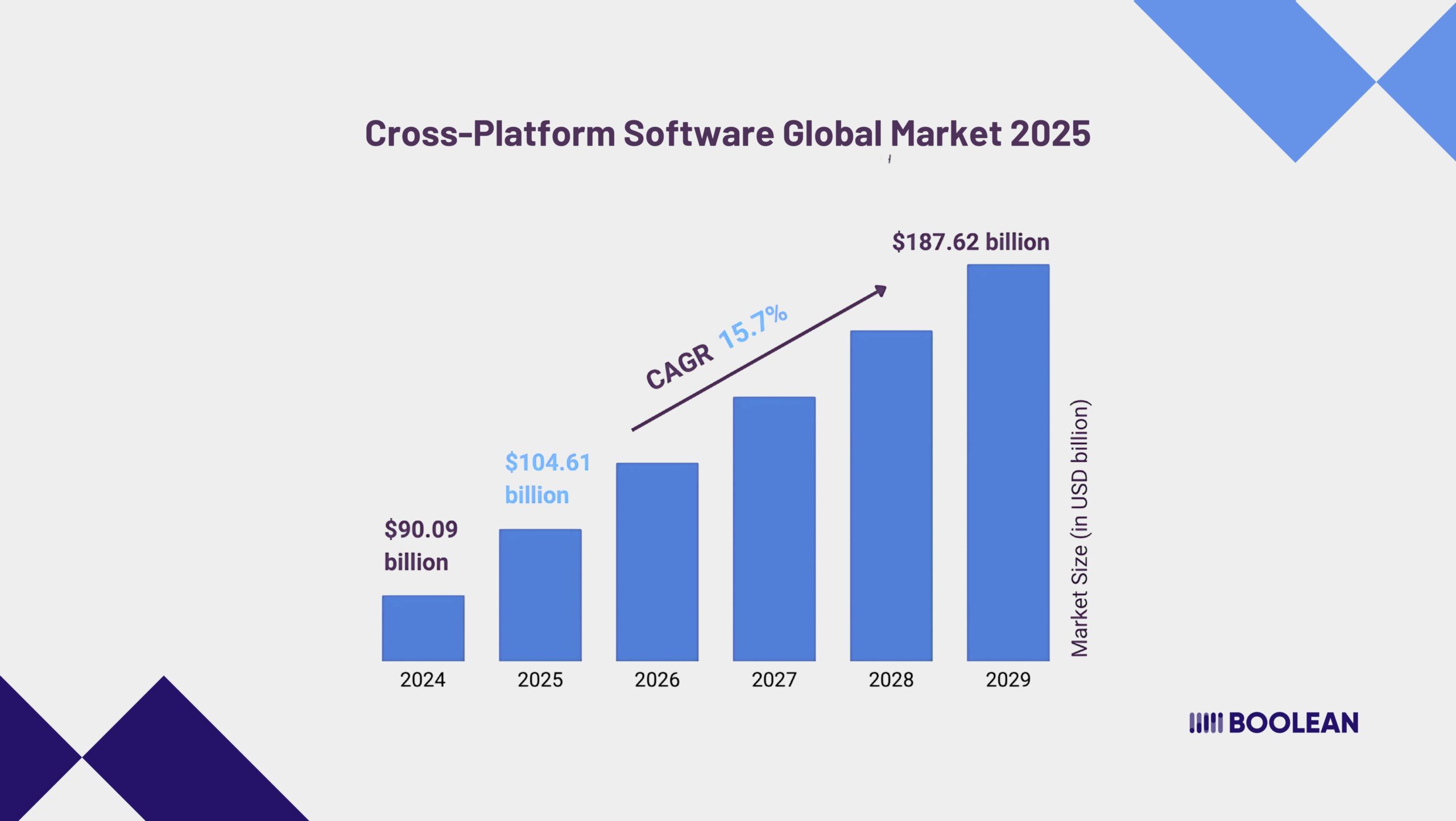
That tells you something. More people are turning to cross platform frameworks so that they can move rapidly, reach more users, and save on time of development time.
Startups want to launch quicker. Product teams need to test ideas without breaking the budget. Developers just want tools that don’t get in their way.
So, which one should you go with?
This post breaks it down. You’ll get a real-world look at Flutter vs Kotlin Multiplatform, how they compare with React Native, and what might work best for the kind of app you’re building.
We are keeping it honest, simple, and useful.
Let’s take a closer look.
What Are Cross Platform Frameworks?
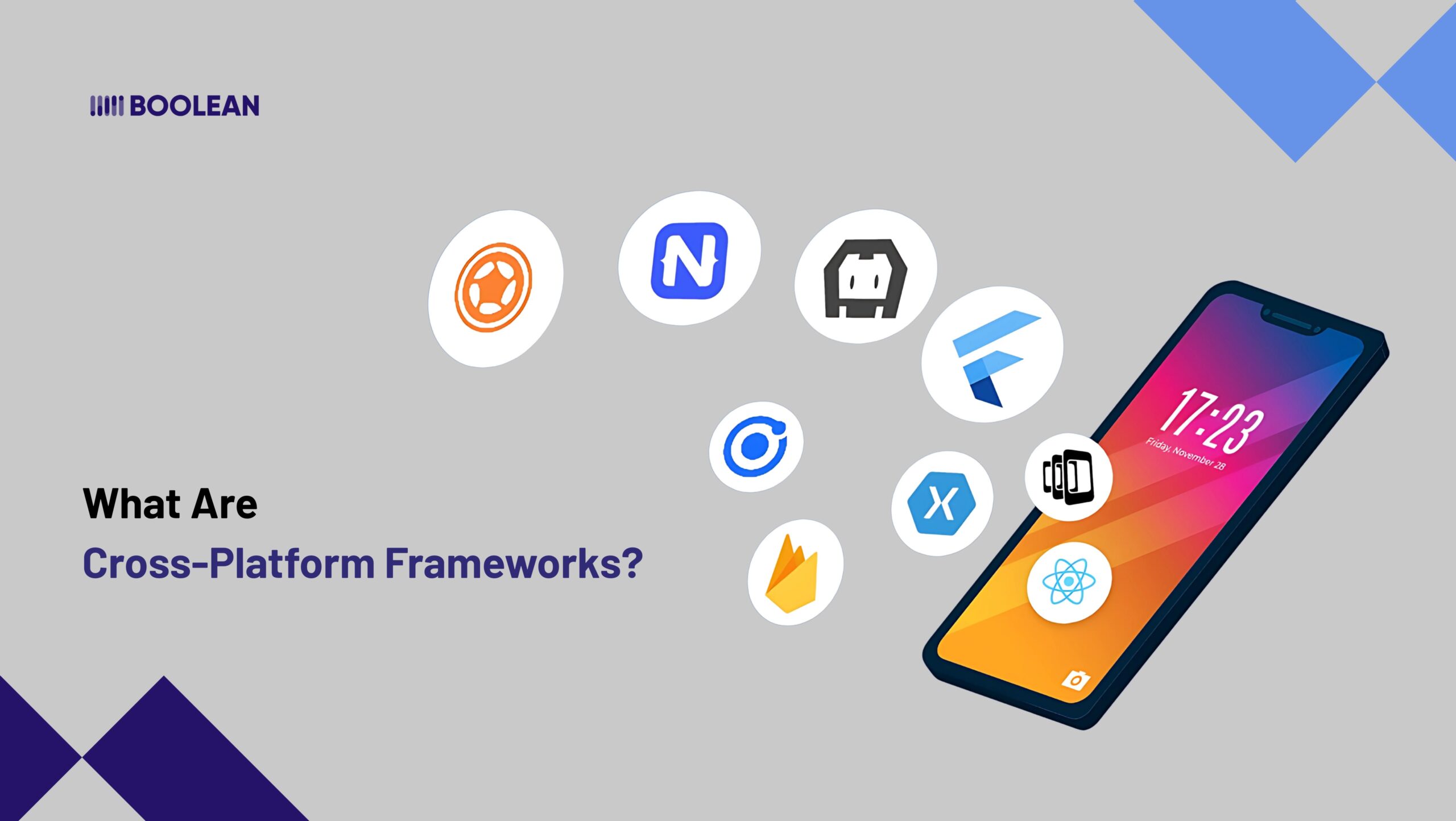
Let’s say you want your app to run on both iOS and Android. Should you build two versions from scratch?
Thankfully, no.
That’s where cross platform frameworks come in. They let you write most of your code once and run it on multiple platforms. One codebase. Less duplication. Faster delivery.
These tools are a big part of cross-platform app development. And they’ve become more popular for a reason.
Here’s why many teams use cross platform frameworks:
- Faster development – One codebase saves time.
- Lower costs – Fewer resources needed to launch.
- Consistent UI/UX – Easier to keep the experience similar on both platforms.
- Shared logic – Great for apps with complex business rules or real-time features.
- Larger talent pool – You don’t need separate teams for iOS and Android.
But there are trade-offs, too. Some mobile frameworks offer more flexibility than others. Some handle performance better. Others give you easier access to native device features.
That’s why picking the right one matters.
The most popular cross platform frameworks right now are:
- Flutter
- Kotlin Multiplatform
- React Native
Each has its own strengths, and the best choice depends on your app’s needs.
If you’re still exploring, you might find our Best Mobile App Development Frameworks article helpful.
In short, cross platform frameworks help you do more with less. But the tools you pick and how you use them can make a huge difference.
Quick Overview of Flutter, Kotlin Multiplatform, and React Native
Before we go into a cross-platform comparison of Flutter vs Kotlin Multiplatform vs React Native, it helps to understand what each structure is trying to do.
They all fall under the umbrella of the cross-platform structure, but they take a very different approach.
There is a quick breakdown of the Big Three.
- Flutter

Flutter has been developed by Google.
Flutter is known for its smooth UI and rapid performance. It uses the Dart programming language and comes with a set of adaptable widgets for the creation of beautiful interfaces.
Why developers like it:
- Full control over UI.
- Hot reload for quicker testing.
- One codebase for iOS and Android.
- Strong support for animation and visuals.
The Flutter have increased rapidly, especially in the last few years. Flutter with a continuous update in 2025, it is one of the most complete app development framework available today.
Want to see how it compares to other devices?
👉 Flutter vs React Native vs Xamarin: Which One is Best for Cross-Platform App Development?
- Kotlin Multiplatform
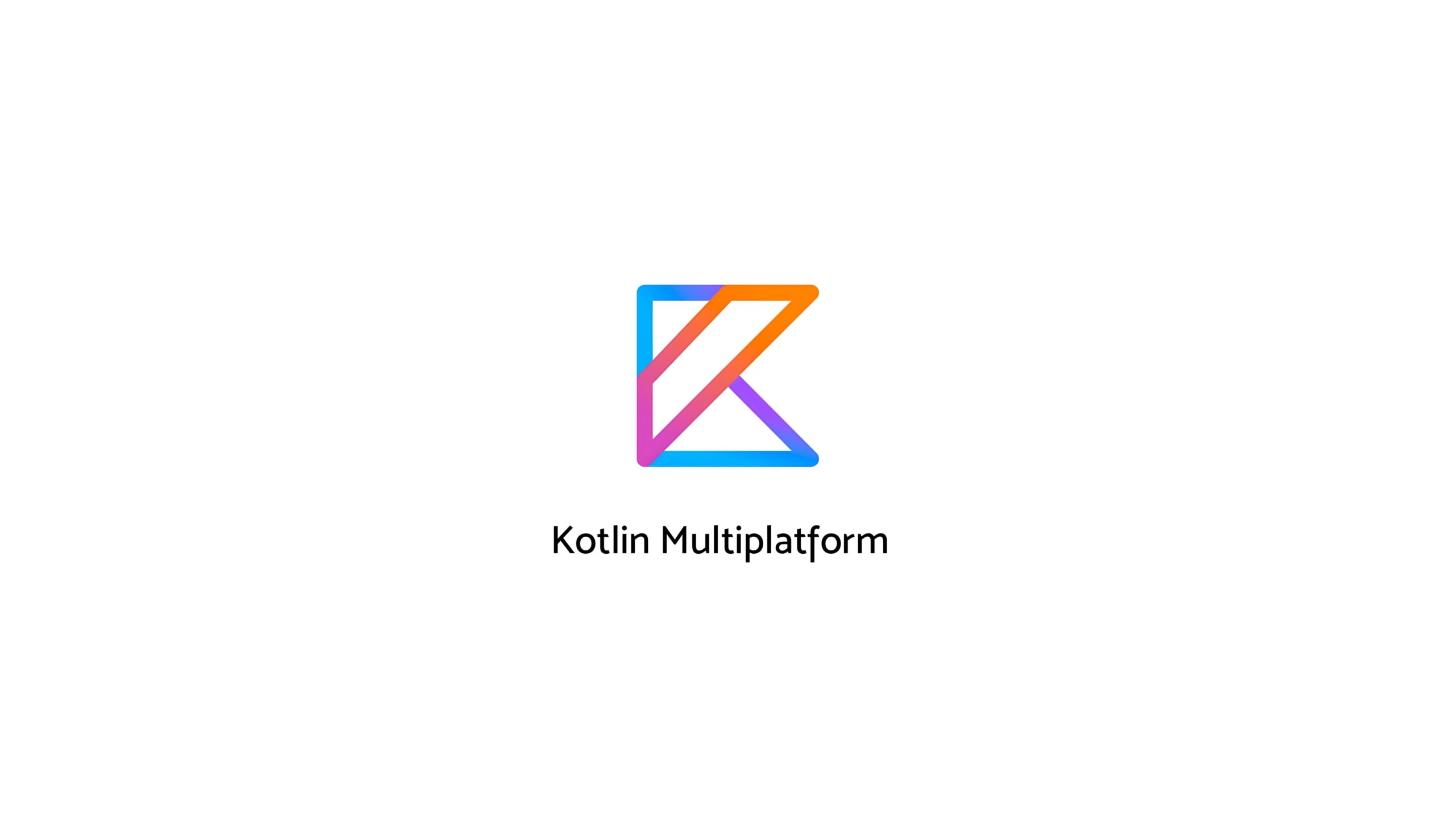
Kotlin Multiplatform (also known as KMM) is created by JetBrains, only one team behind the Kotlin language.
Instead of focusing on UI, it helps you share business arguments on platforms using native devices for the interface.
Why some teams prefer it:
- Write shared code in Kotlin.
- Use native UI where needed.
- Great for teams already using Kotlin on Android.
- Works well with existing projects.
It’s still evolving, but it’s gained traction for apps that need flexibility and native-like behavior. Curious how it works?
👉 How to Build Multiplatform Apps Using Kotlin Multiplatform Mobile (KMM)
For logic-heavy apps or projects with existing native teams, Kotlin Multiplatform is a solid choice.
- React Native
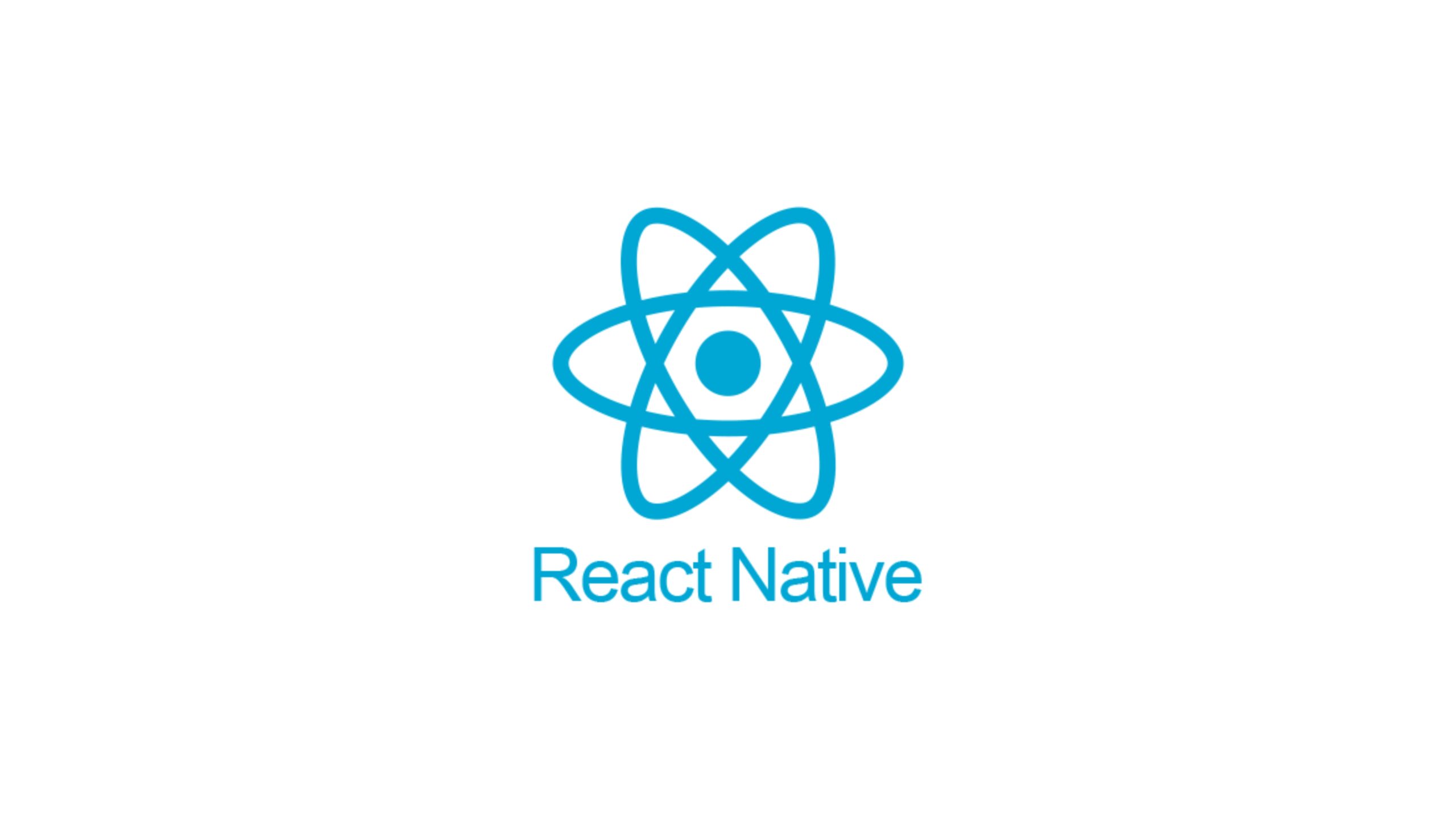
React Native is developed by Meta (formerly Facebook). It uses JavaScript or TypeScript and allows you to build apps using React, one of the most popular web libraries.
Why it’s still widely used:
- Easy to get started with if you know React.
- Strong community and open-source ecosystem.
- Plenty of ready-made components.
- Updated constantly (watch for the latest React Native updates).
While it might need extra work to match native performance in some areas, it’s a reliable tool, especially if your team already works with web technologies.
If you’re not sure how this compares to building natively, check this out:
👉 Hybrid vs. Native Apps: Pros and Cons for Your Business
Each of these tools falls under the category of multiplatform app tools. But as you can see, they focus on different parts of the development puzzle.
Some are better for UI. Others shine when you’re sharing logic across platforms. That’s why it’s worth looking deeper into how they compare.
React Native vs Flutter vs Kotlin Multiplatform: Head-to-Head Comparison
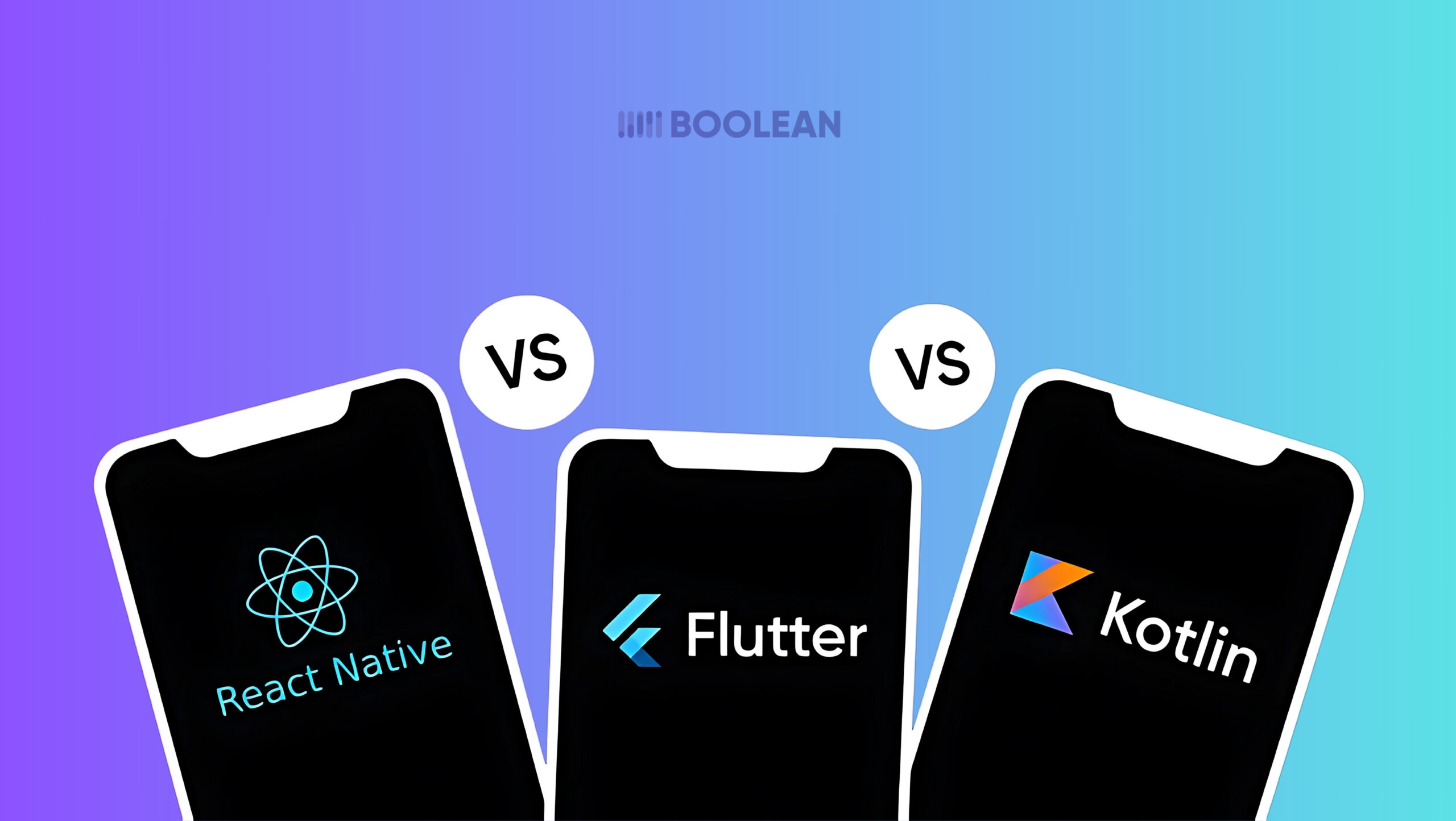
So you have narrowed it. You are serious about cross platform app development.
Still, you are staring at three popular options: Flutter, Kotlin Multiplatform, and React Native, and wondering which one your app likes the best.
It is a normal place to get stuck. And honestly? There is no one-size-fits-all answer here.
But if you understand what everyone does well and where they struggle, it becomes very easy to move forward with confidence.
Let’s compare them in some important areas.
- Code Sharing & Flexibility
This is usually where the decision starts.
- Flutter gives you one codebase for everything: UI, business logic, animations, you name it. You work in Dart and control almost every pixel.
- Kotlin Multiplatform shares just the core logic. The UI is still written in Swift and Jetpack Compose (or XML, if you’re old-school). It’s great if you want a native feel but don’t want to duplicate all your business rules.
- React Native strikes a middle ground. You can create UI and logic once using JavaScript, but you will take a dip into the native code for more advanced features.
So what does it mean in plain words?
If you are less on time and want a single workflow for everything, then Flutter is a safe choice.
If you already want Kotlin deep in the world and want native looking apps with shared minds, Kotlin Multiplatform works well.
If your team lives in React and already builds for the web, React Native feels natural.
- UI & Performance
Let’s talk feel and speed.
- Flutter is known for smooth UI and coherent behavior on the platform. It uses its own rendering engine, so it does not rely on native components.
- Kotlin Multiplatform distributes indigenous performance as your UI is still written with indigenous equipment. You are not imitating anything.
- React Native has grown much better, especially with recent updates, but it still depends on the native bridges for some characteristics, which can slow things down.
If your app is visually rich or UI animation-heavy (think of Fintech apps or Lifestyle Apps), many deities prefer Flutter.
If you are some logic-focused and UI stability is not your top priority, Kotlin Multiplatform provides too much control.
When you want to ship faster, React Native fits well, and you are fine with topical native testing for edge cases.
Read Also: Best Mobile AI Frameworks: From ONNX to CoreML and TensorFlow Lite
- Developer Experience
This one matters more than people admit. If your developers are frustrated, your project’s going to stall.
- Flutter has great tooling and hot reload. Most people find it pleasant to work with once they get past Dart.
- Kotlin Multiplatform is easy to adopt if your team already knows Kotlin, but setting up separate UIs can slow things down.
- React Native has a huge support base, reusable components, and great learning resources, but can sometimes feel a little hacky around native integrations.
The question to ask is: What does your team already know?
If you’re hiring or scaling, that matters too. It’s easier to find React Native devs. Flutter devs are growing fast. Kotlin Multiplatform folks? Still a bit niche, but catching up.
- Community & Ecosystem
All three frameworks have good community support. But not all are equal yet.
- React Native is developed by Meta and has years of developer support behind it.
- Flutter is supported by Google and has seen rapid growth, especially with more companies using it in production.
- Kotlin Multiplatform is still newer on the scene, but its tight integration with native platforms makes it appealing for long-term projects.
You’ll find more plug-and-play solutions in Flutter and React Native. Kotlin Multiplatform has fewer third-party libraries, but the core experience is clean and well-documented.
- Best Fit for Startups
If you’re moving fast, testing ideas, or building your MVP, this part really matters.
- Flutter is a favorite for many startups. Quick iterations. Shared UI. Fewer surprises.
- React Native is great too, especially if you already use React on the web.
- Kotlin Multiplatform can work, but it’s often a better fit for teams with existing Android experience or projects with long-term scaling in mind.
So, which cross platform framework is best for startups?
Go with Flutter or React Native if you want speed, simplicity, and quicker MVP cycles.
Look at Kotlin Multiplatform if your project demands performance, complex business logic, and future flexibility.
Flutter vs React Native
| Feature | Flutter | React Native |
|---|---|---|
| Language | Uses Dart. Not as widely known, but simple to pick up. | Uses JavaScript or TypeScript. Easy for web devs to adopt. |
| UI Control | Full control. Draws its own UI, looks the same on iOS and Android. Great for design-heavy apps. | Uses native components under the hood. Feels native but can vary slightly across platforms. |
| Performance | Very smooth. No bridge needed. Great for animations and UI-heavy apps. | Improved a lot with recent React Native updates, but still uses a bridge in some cases. |
| Learning Curve | Slight learning curve if you’re new to Dart, but excellent documentation and tools. | Easier if your team already knows React or JavaScript. |
| Community & Ecosystem | Fast-growing. Most common tools and packages are now supported. | Mature and massive. Lots of libraries, guides, and support. |
| Best Use Case | Ideal for apps where UI consistency matters. Great for startups and MVPs. Works well across platforms with fewer surprises. | Great for teams with React experience. Good for simpler apps, quick prototypes, and gradual builds. |
| Flutter vs React Performance | Often faster, especially in animation-heavy UIs. | Feels close in lighter apps, but sometimes slower in large or complex apps. |
| Cross-Platform Strength | One codebase for logic and UI. Very unified workflow. | Shares logic and some UI, but deeper features may need native modules. |
| Choosing Flutter or React Native | Choose Flutter if you want a perfect UI and smoother animations. | Choose React Native if you want more JS support and faster onboarding. |
If you are comparing the app development framework for future MVP or long-term construction, both devices are solid.
The real question is whether your team’s current strengths and product meet goals.
Also, if you’re starting small and thinking MVP first, this might help:
👉 MVP in Mobile App Development: A Comprehensive Guide
Flutter vs Kotlin Multiplatform
| Feature | Flutter | Kotlin Multiplatform (KMM) |
|---|---|---|
| Code Sharing | Shares both UI and logic with a single Dart codebase | Shares only business logic (UI remains native) |
| UI Approach | Uses Flutter’s own rendering engine for a consistent cross platform UI | Uses native UI (Jetpack Compose for Android, SwiftUI/UIKit for iOS) |
| Performance | High performance across devices thanks to its rendering engine | Native-level performance, especially for UI |
| Language | Dart | Kotlin |
| Tooling & Community | Backed by Google, a strong and growing community | Backed by JetBrains, gaining traction among Android devs |
| Flutter for iOS and Android | Full control over UI on both platforms | UI is built separately for each platform |
| Best Use Case | Great for startups, MVPs, design-heavy apps, and consistent UI needs | Ideal for enterprise apps, logic-heavy features, and existing native teams |
| Flutter vs Kotlin for Mobile Apps | All-in-one build experience with fast iteration | More native control, better for integrating into existing apps |
| Learning Curve | Easy if you’re starting fresh or already using Flutter | Easier for Android teams already using Kotlin |
| Team Fit | Good for full-stack mobile teams or Flutter-first shops | Best for Kotlin-experienced teams or mixed-platform apps |
Thinking about long-term maintenance or scalability?
If you are looking for a more integrated workflow, Flutter is likely to be a better fit.
If you want to stay close to native devices and just cut repetitive logic, Kotlin Multiplatform gives you that flexibility.
Kotlin Multiplatform vs React Native
| Feature | Kotlin Multiplatform (KMM) | React Native |
|---|---|---|
| Code Sharing | Shares business logic only. UI remains native per platform. | Shares UI and logic using JavaScript or TypeScript. |
| UI Strategy | Write native UIs separately (Compose + SwiftUI) | UI built with reusable React components |
| Performance | Native-level performance, especially in complex or large apps | Good performance; improving with every React Native update |
| Language | Kotlin | JavaScript or TypeScript |
| Best Use Case | Ideal for apps with heavy business logic and existing native codebases | Great for fast development, MVPs, and web-to-mobile teams |
| Integration | Works well with existing Android/iOS codebases | Can integrate with native code, but may require more setup |
| Community & Ecosystem | Growing but still maturing | Large, mature community with lots of packages |
| Cross-platform Strength | Strong on logic sharing, less on UI reuse | Strong on fast UI sharing and prototyping |
| Kotlin Multiplatform vs React Native | Better for long-term scaling, especially in native-heavy apps | Better for speed, especially in early-stage or web-oriented teams |
| Best Mobile App Framework Fit | Suits enterprise-grade apps and backend-focused builds | Ideal for cross platform frameworks for startups looking to ship fast |
Summary:
- React Native is often faster to launch with, especially for teams familiar with React or JavaScript.
- Kotlin Multiplatform fits better when native performance and control are key, especially if you’re working with Android already.
Looking for expert help to bring your MVP to life? Check out the Top MVP Development Companies.
Choosing the Right Cross Platform Framework: Flutter vs Kotlin Multiplatform vs React Native
Choosing a cross platform framework is not about chasing trends. This is about making the best call for your team, your timeline, and your users.
Some teams want to move fast. Others need long-term flexibility. Some care most about design. Others care about deep platform features.
So, how do you decide?
Let’s walk through it, clearly, calmly, no hype.
React Native
If your team has already worked with a response, the option may feel clear. The React Native app development allows you to create a mobile app using JavaScript or TypeScript.
You can share code between iOS, Android, and even the web.
Great for:
- MVPs
- Fast prototyping
- Web teams jumping into mobile
- Startups needing speed
Less ideal for:
- Complex native animations
- Heavy performance needs
- Deep integrations with device features
That said, React Native updates in 2025 have made it far smoother and more powerful than a few years ago.
Flutter
If visual control and consistency matter, Flutter app development is hard to beat. You write once in Dart and get beautiful, responsive apps on both platforms.
Great for:
- Teams starting from scratch
- Designers who want pixel-perfect results
- High-UI-demand apps
- Tight deadlines
Less ideal for:
- Teams unfamiliar with Dart
- Existing native codebases
- Heavy platform-specific customizations
For anyone asking, “Which cross-platform framework is best in 2025?”, Flutter is often the most balanced option in terms of performance, look, and developer experience.
And yes, it’s excellent for building with one team across both iOS and Android.
Kotlin Multiplatform
This one’s different. It doesn’t try to unify the whole app. Instead, it lets you share core business logic and keep your UI fully native.
Great for:
- Large teams with existing native codebases
- Kotlin-heavy backends
- Apps that need to feel 100% native
- Long-term architecture planning
Less ideal for:
- Teams with no Kotlin experience
- Projects where shared UI matters more than native UI
- Kotlin Multiplatform for mobile development has quietly become a go-to for companies scaling across platforms without giving up native quality.
A Quick Cross-Platform Comparison
| Need This? | Go With… |
|---|---|
| Web-to-mobile transition | React Native |
| Fast build + clean design | Flutter |
| Native UI with shared logic | Kotlin Multiplatform |
| One codebase, consistent UI | Flutter |
| Existing native teams, more logic reuse | Kotlin Multiplatform |
| Huge plugin ecosystem | React Native |
Cross-Platform Trends You Shouldn’t Ignore
Things move fast in mobile app development. Frameworks change. Expectations rise. And the lines between platforms keep blurring.
This is 2025 and cross platform frameworks are getting smarter, leaner, and more flexible. It is no longer just “write once, run anywhere”, it is about building applications that feel responsive, secure, and intelligent, regardless of where they run.
Flutter, React Native, and Kotlin Multiplatform are all responding to that pressure. All three frameworks are adding better tooling, improved performance, and deeper access to platform-specific features.
But what’s new? What’s shaping the future?
We’re seeing big shifts in how developers approach security and AI.
Features like real-time edge AI are showing up in modern cross-platform stacks, processing data directly on the device, reducing latency, and keeping things private.
This plays especially well with multiplatform tools that support native capabilities more directly.
And then there’s security. Privacy isn’t optional anymore. With threats constantly evolving, many teams are now integrating zero-trust mobile security into even early-stage builds. No trust is assumed; everything is verified.
Cross-platform stacks are adjusting by offering better access to native security tools, encryption APIs, and secure storage.
Also worth noting? New experiments around on-device RAG in mobile apps, retrieval-augmented generation models that work offline. This trend leans heavily on cross-platform app frameworks that allow tighter native integration while still sharing core logic.
A Trusted Name in Cross-Platform Development
Finding the right framework is one thing. Finding the right team to build with it? That’s just as important.
If you’re looking for a partner that gets cross-platform inside and out, design, code, and launch, Boolean Inc. is one to watch.
They’ve assisted startups and enterprises in building fast, reliable applications using Flutter, React Native, and Kotlin Multiplatform.
What makes them different? They don’t build apps. They think through product strategy, performance, and the long-term maintainability of the software.
Whether you are bringing a lightweight MVP to market or scaling a complex cross-platform application, they speak your language and your tech stack.
Conclusion
Flutter vs Kotlin Multiplatform vs React Native: Get rid of feeling confused while sorting out one from the other.
All three of them are proven cross platform frameworks, and all come with their tradeoffs; all shine in different situations.
If you want a fast development cycle with a common skill base, React Native definitely is a player along this line-especially with the latest updates, and do give some consideration to this.
If UI and performance matter as priorities, Flutter has that nice experience on iOS and Android from a single codebase.
If sharing business logic is important to you, at the same time, you want native UIs that are separate, Kotlin Multiplatform gives you both without taking shortcuts.
Ultimately, it depends on how either framework aligns with your plan, team, and timing.
Still don’t know where to begin?
Sometimes two heads are better than one. Companies like Boolean Inc. have hands-on experience with all three and can help you decide with clarity.
Remember, no singular tool can be said to be perfect in itself. Only the precise one combined with the right team behind it will make things faster, smarter, and less stressful.
FAQs
- Which cross platform framework is best for startups?
If speed and flexibility matter most, React Native or Flutter are great picks. Flutter gives more design control, while React Native is easier if your team knows JavaScript.
- Can Kotlin Multiplatform fully replace native development?
Not entirely. It helps you reuse logic across platforms, but the UI is still built natively. It’s ideal when you want shared code without giving up native control.
- Is Flutter good for both iOS and Android?
Yes, absolutely. Flutter apps look and feel consistent across iOS and Android, with strong performance on both.
- What if my team already knows React?
Then React Native might be the smoothest choice. You can reuse your existing knowledge and get up to speed quickly.
- Which one will scale better long-term?
It depends on your app’s complexity. For design-heavy apps, Flutter. For architecture flexibility and native performance, Kotlin Multiplatform is a strong option.







